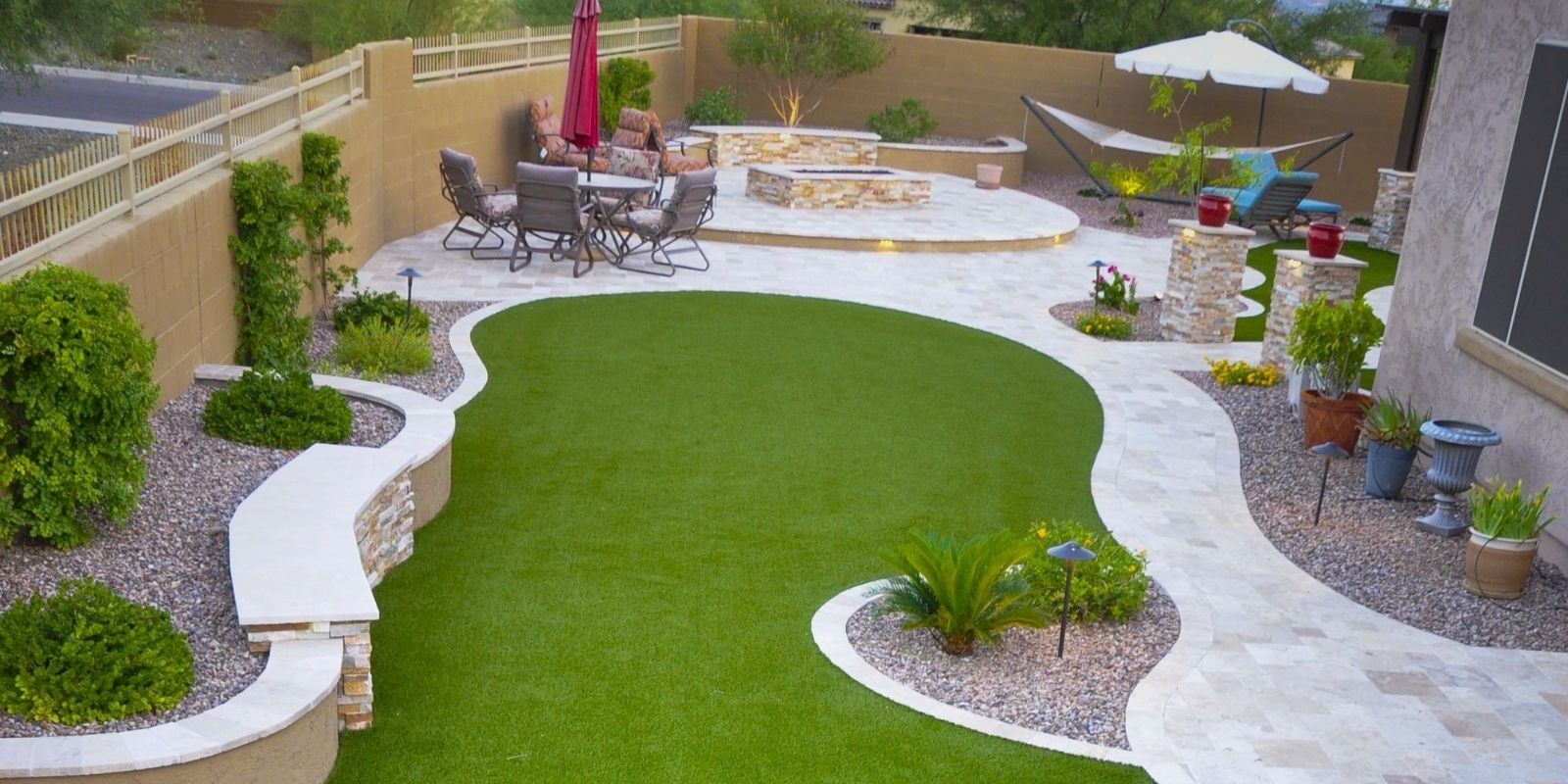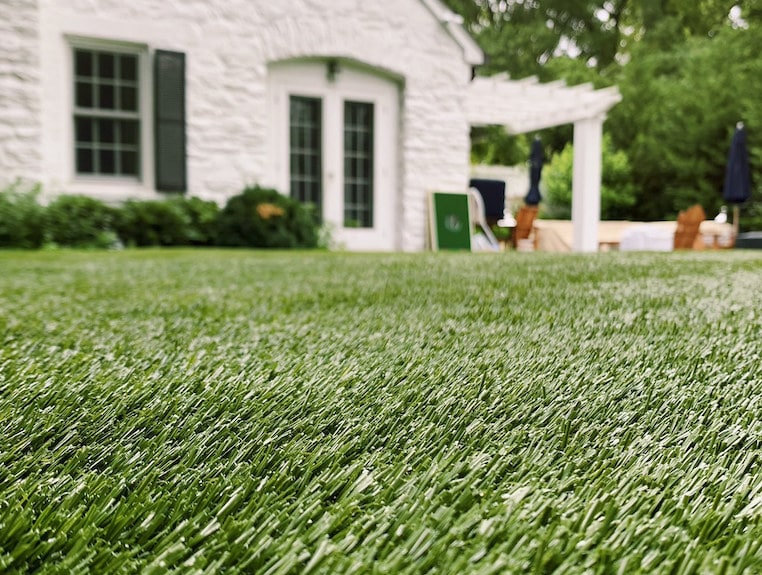Tailored Turf Installation Phoenix AZ for Residences, Companies, and Recreational Spaces
Delve Into the Environmental Advantages of Opting for Synthetic Grass Solutions
The fostering of artificial turf options offers an engaging chance to attend to pressing ecological obstacles. By significantly decreasing water usage and lessening the application of harmful chemicals, these alternatives not just promote lasting landscape design yet additionally shield neighborhood environments.
Water Preservation Conveniences
Among the most significant benefits of synthetic grass is its capability to conserve water. Standard turf yards call for considerable irrigation, particularly in areas susceptible to drought or water restrictions. In contrast, synthetic grass does not require watering, substantially reducing the total need for water resources. This feature is specifically advantageous in arid areas where water deficiency is a pressing issue.
By getting rid of the requirement for regular watering, synthetic grass adds to sustainable landscape practices and aids minimize the environmental impact of too much water consumption. Additionally, the conservation of water includes the decrease of runoff, which can result in dirt erosion and waterway air pollution.
In addition, the installation of fabricated grass permits property owners and districts to assign water sources more effectively, concentrating on essential uses such as alcohol consumption water and farming. The shift towards fabricated grass not only advertises responsible water use yet also aligns with broader environmental goals targeted at preserving natural deposits.
As communities significantly prioritize sustainability, the water preservation advantages of synthetic lawn provide a compelling case for its adoption in residential and industrial landscape design tasks.
Minimized Chemical Usage
The shift to synthetic grass significantly reduces the dependence on chemical therapies generally utilized in natural yard maintenance. Conventional turf administration usually entails the application of pesticides, plant foods, and herbicides to advertise growth and control insects. These chemicals can posture risks to human wellness, neighborhood wildlife, and the environment, adding to soil and water contamination.
In contrast, synthetic turf eliminates the need for these damaging substances. As soon as set up, it calls for very little upkeep, primarily containing routine cleansing and occasional infill replenishment. This reduction in chemical use not only benefits the instant environment yet likewise adds to broader ecological security. By reducing the launch of artificial compounds right into the ecological community, synthetic turf promotes much healthier soil and water supply.
In addition, the lack of chemical overflow connected with synthetic grass setups helps secure neighborhood waterways from contamination, supporting marine life and maintaining biodiversity. Arizona artificial turf. As communities progressively prioritize lasting techniques, going with synthetic turf presents a feasible remedy that straightens with environmental preservation goals. Through this shift, property owners can appreciate lush eco-friendly areas without jeopardizing eco-friendly health, paving the method for an extra lasting future
Lower Carbon Footprint

In addition, the installation of synthetic grass can result in considerable water preservation. All-natural yards require significant quantities of water for watering, which not just contributes to the carbon impact connected with water extraction and treatment however likewise pressures regional water resources. In contrast, man-made lawn requires minimal maintenance, needing no watering, consequently significantly lowering water use and its linked power prices.
In addition, the durability of man-made grass contributes to its decreased carbon effect. With a life-span of approximately 15 years or even more, the requirement for regular replacements is reduced, leading to much less waste and lower power intake in manufacturing and throwing away conventional yard options. On the whole, synthetic grass provides a sustainable option for environmentally mindful landscaping.
Environment Conservation
Habitat preservation is a crucial consideration in the argument over landscaping selections, especially when comparing synthetic grass official statement to natural yard. Natural grass yards often call for substantial maintenance, consisting of making use of chemicals, fertilizers, and herbicides, which can adversely influence regional environments. These chemicals can leach right into the dirt and waterways, damaging native vegetation and fauna and interrupting neighborhood habitats.
In contrast, synthetic grass provides an opportunity to minimize the eco-friendly impact of landscaping. By selecting synthetic lawn, property owners can minimize the disturbance of natural habitats linked with traditional grass treatment techniques. Synthetic grass removes the requirement for unsafe chemicals, thus securing nearby wildlife and preserving the integrity of bordering ecosystems. Additionally, the installment of synthetic grass can result in the conversion of former lawn locations right into more biodiverse landscapes, such as pollinator yards or indigenous plant locations, which can sustain local wildlife.
Ultimately, the transition to synthetic grass not only conserves water and reduces upkeep initiatives however likewise promotes a much more harmonious relationship between human tasks and the natural surroundings, promoting habitat preservation in the procedure.
Long-Term Sustainability
Lasting sustainability is a vital consider examining the advantages of synthetic turf over typical grass lawns. One of the most considerable benefits of synthetic grass is its longevity; it can last as much as 15-20 years with marginal maintenance, whereas all-natural lawn needs regular reseeding and substitute. This durability lowers the demand for constant sources, such as water, fertilizers, and pesticides, which click are vital for preserving a healthy yard yard.
Furthermore, synthetic grass contributes to a decrease in carbon discharges connected with yard care devices. Traditional yards often call for gas-powered mowers, trimmers, and blowers, every one of which contribute to air contamination. Turf installation phoenix az. On the other hand, synthetic grass eliminates the requirement for such equipment, advertising a cleaner setting
Additionally, the manufacturing of synthetic grass significantly utilizes recycled materials, enhancing its sustainability account. As producers take on green practices, the environmental impact of fabricated turf remains to lessen.

Final Thought
The Going Here adoption of fabricated grass solutions offers considerable environmental benefits, including significant water conservation, lowered reliance on harmful chemicals, and a reduced carbon footprint. Fabricated lawn aids in maintaining all-natural environments by lessening land disruption and advertising long-lasting sustainability through the use of long lasting products. Jointly, these factors underscore the possibility of fabricated lawn to add favorably to environmental wellness and supply a feasible alternative to standard landscape design practices in a progressively resource-conscious globe.
In contrast, synthetic grass does not require watering, considerably lowering the total demand for water resources. By lessening the launch of artificial substances into the community, man-made turf promotes healthier dirt and water systems.
In addition, the setup of man-made lawn can result in considerable water preservation. In contrast, fabricated grass requires minimal upkeep, needing no watering, therefore substantially decreasing water use and its linked power prices.
